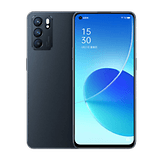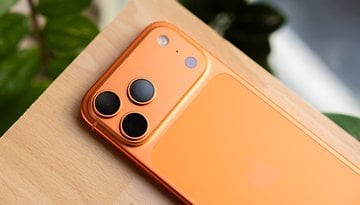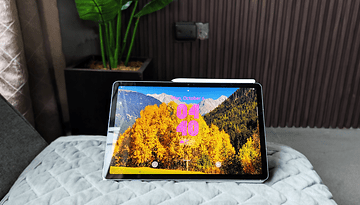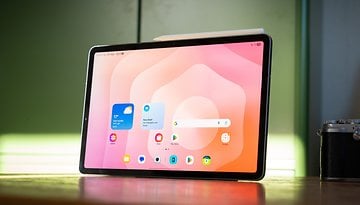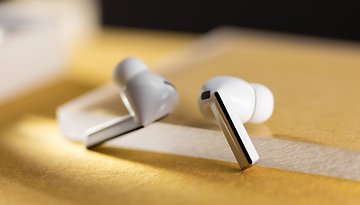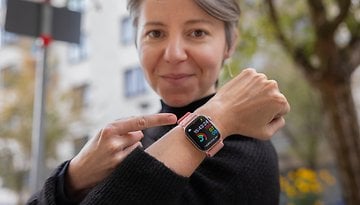Oppo Reno 6 5G review: iPhone copycat for 500 bucks
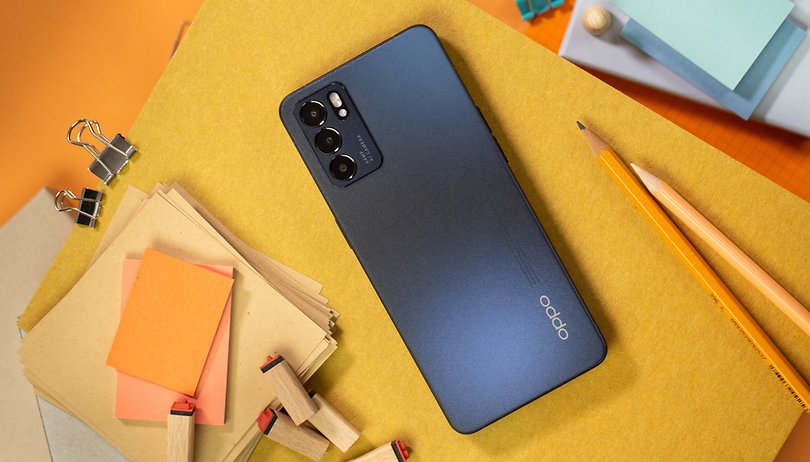

Oppo has just launched an interesting Android alternative to the iPhone with the Reno 6 5G! The phone looks like the latest generation of Apple smartphones, at least hardware-wise. The software is obviously different – and the price tag. The smartphone only sets you back around 500 dollars.
Good
- Solid build quality
- Super fast Quick-Charging
- Fancy AMOLED display with 90 Hz
- Good battery life
Bad
- Mediocre performance
- No telephoto lens
- Only IP54 certification
- Single speaker
- No microSD-slot
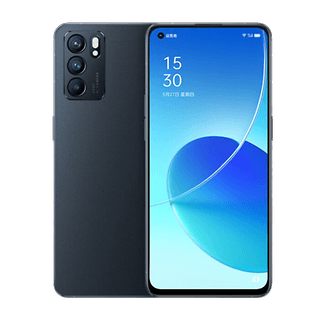
A short summary of the Oppo Reno 6
Note: I was able to test the Oppo Reno 6 for just under a week before its official release. However, the review unit is not a pre-production handset, so it is the same as what you would pick up from retail stores.
With its particular design and the solid build quality, the new Oppo Reno 6 reminded me of the iPhone 12 when I first unpacked it. Further into the review, the smartphone turned out to be a good companion as my daily driver. What struck me the most was the fast Quick-Charging speed and the bright AMOLED display with a 90 Hertz refresh rate, both being a delight at the office, at home, and while I am out and about.
However, the camera setup is rather boring without a dedicated telephoto lens. Also the performance of the Dimensity 900 SoC doesn't really knock your socks off. Other drawbacks include a single speaker output that dampens any music or video streaming experience, with the IP54 certification being okay at best. At a price of around $499 – a little more or less depending on the version you pick – the Reno 6 is nevertheless a capable and, above all, value-for-money piece of technology.
Design & Display: Feels more expensive than it really is!
Oppo has equipped the new Reno 6 with an anti-fingerprint back in a retro design form factor. This is basically glass that feels like aluminum to the touch. The dimensions of the smartphone measure 156.8 x 72.1 x 7.59 millimeters. Thanks to a display-to-case ratio of 91.7 percent, a 6.43-inch AMOLED display manages to fit inside the case. Thanks to a 90 Hertz refresh rate the screen looks really smooth.
What I liked:
- Fancy AMOLED display with a 90 Hz refresh rate
- Really well made
- Great back panel that is not a fingerprint magnet
What I disliked:
- Single speaker configuration
- Under-display fingerprint sensor is not always accurate
In my review headline, I compared the Oppo Reno 6 to the iPhone. Make no mistake about it, I did not mean to come up with such a title that functions as a clickbait, but that was what I thought when I unpacked the Reno 6. Stefan, who has been using the iPhone 12 Pro Max for a few months now, also described the Reno 6 to "feel like an iPhone" when I placed the handset in his hand.
One reason for this would be the hard edges that wrap around the Reno 6's chassis. Although the corners are rounded, the transition from the sides to the display is solid just like how Arnold Schwarzenegger's well-chiseled body looked in the 80s. What made it feel like an Apple handset was also the high build quality from Oppo. The Reno 6 simply feels good to the touch, as though it was made from expensive material, with the buttons offering excellent tactile feedback. Even the vibration motor purred nicely. As you know from our poll, the quality and performance of a vibration motor is an important criterion when choosing a smartphone.
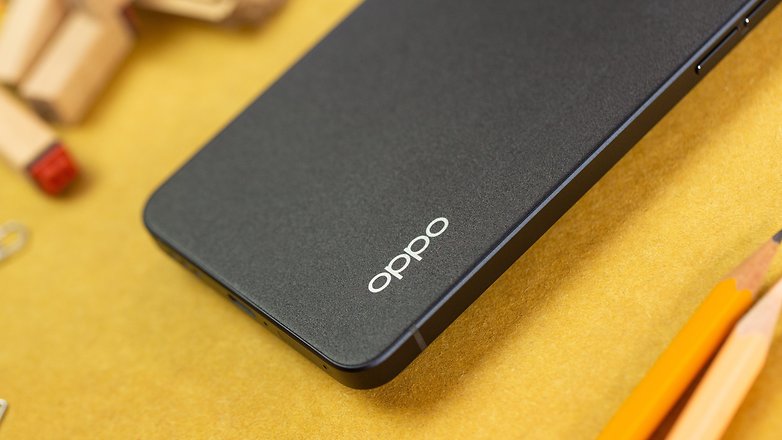
What should not be compromised in a smartphone would be the display. On the Reno 6, the display measures 6.43-inches across diagonally and is punctuated by a decent punch-hole camera. The bezels are narrow enough to befit the premium look of the handset, although I would have liked the chin to be a bit thinner. Overall, the display performs well with AMOLED technology, achieving a maximum brightness of 600 nits and a refresh rate of 90 Gertz. The 1,080 x 2,400 pixels resolution is also sufficient for everyday use.
The screen remains extremely legible even when you are using it under bright sunlight. However, Oppo's brightness control annoyed me a little bit in everyday use. ColorOS reduces the brightness level by a rather large margin in darker environments. In combination with the software, the fingerprint sensor is not that accurate throughout the time I spent with it. Located under the display just like many other smartphones in 2021, it feels imprecise and has a rather sluggish response time. It takes almost a second to unlock the smartphone even when the finger is perfectly placed. I also didn't like the fact that you have to switch between the number pad and finger sensor using a swipe gesture.
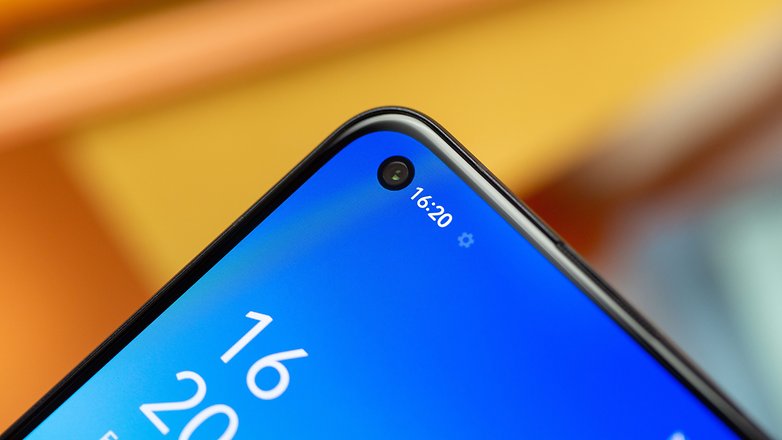
I also have to point out the IP54 certification rating that makes it safe for use in the rain, which I think is insufficient for handsets in 2021. Thus, owners of the Oppo Reno 6 should be careful not to drop it into any pools of water during use. Last but not least, a big thumbs down for the single speaker that is located at the bottom. It might be loud, but it does not sound particularly good. Plus, you'll cover it most of the time should you be a fan of one-handed use.
TL;DR: The display is one of the strengths of the new Reno 6. It has been well integrated into the beautiful case and is legible even under bright sunlight. While the build quality is very good, the low IP certification rating and single speaker at the bottom bothers me.
Performance: Dimensity 900 is sufficient...for now
The Oppo Reno 6 is powered by a Dimensity 900 SoC from MediaTek. The chip supports 5G and otherwise offers a normal performance level for mid-range SoCs. Oppo shines with WiFi 6 and Bluetooth 5.2 in terms of wireless standards, although the 8GB RAM and 128GB of internal memory are minimal at best. You'll have to make do with LPDDR4x RAM and UFS 2.1 storage, which are frankly rather slow compared to the newer standards.
What I liked:
- Sufficient performance for everyday use and for mobile games
- No overheating problems
- Bluetooth 5.2 and WiFi 6
What I disliked:
- Significantly weaker performance than other comparable smartphones in selected areas
- Rather slow RAM and ROM configuration
Looking at the Oppo Reno 6's specifications, you won't find yourself sitting at the edge of your seats. The SoC doesn't put a smile on mobile gamers' faces and the memory standards offered are also average at best. Nevertheless, the Reno 6 delivers a satisfactory degree of performance for everyday use. This is even more pronounced when you reduce the duration of animations in the ColorOS operating system by half.
In order to provide you with some values for comparison's sake, I've put the Reno 6 through the paces in most commonly used benchmarks:
Benchmark comparison with current gaming smartphones
| Oppo Reno 6 5G | Realme GT | Samsung Galaxy A72 | OnePlus North 2 | Motorola Edge 20 | |
|---|---|---|---|---|---|
| 3D Mark WildLife | 2023 | 5947 | 1,090 at 6.5 FPS | 4.175 | 2,492 at 14.9 FPS |
| 3D Mark Sling WildLife Stress Test | 2045 / 2038 | 5945 | 1.093 / 1.090 | 4.181 / 2.515 | 2.494 / 2.461 |
| Geekbench 5 (Single / Multi) | 712 / 2125 | 1116 / 3480 | 548/1616 | 1119/3657 |
768/2.776 |
| Memory PassMark | 25.483 | 25.709 | - | 69.304 | - |
| Disc PassMark | 78.226 | 107.337 | - | 31.648 | - |
If we were to compare the Reno 6 with devices that fall within the same price category in benchmark tests, we have to note a below-average performance. Especially when one looks at the Realme GT which uses a flagship SoC, and the OnePlus Nord 2, this smartphone is inferior. This is also clear when we look at the memory and disc benchmarks. Here, the Nord 2 wins out by quite a lush margin.
For this reason, I have written that the Reno 6's processor is "sufficient...for now" in this section's header. In theory, performance in mobile games and also its system performance should be adequate. However, I can very well imagine that in both segments, performance levels will drop with more apps installed over time.
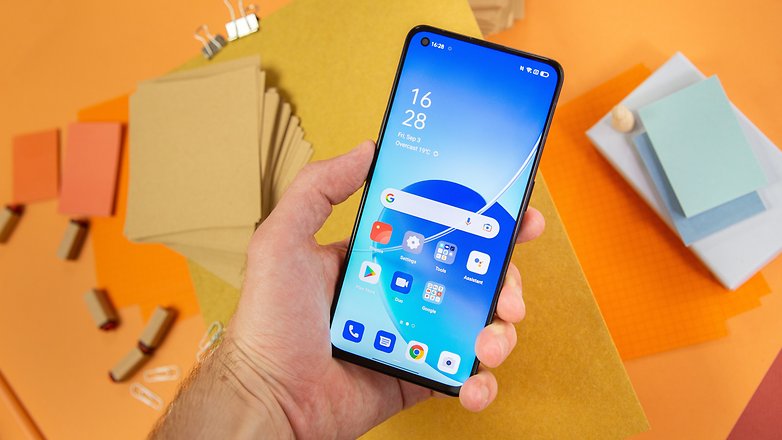
TL;DR: Overall, the performance does not seem to add up to that of a €500 smartphone. However, having support for current wireless standards such as 5G, Bluetooth 5.2, and WiFi 6 are positive aspects of the device. It is also commendable that the Reno 6 does not experience overheating problems even when it runs under a full load continuously.
Camera: Apple's portrait selfie mode better watch out!
At the back of the Oppo Reno 6, you will find a triple camera setup with a maximum resolution of 64MP. Apart from the main camera, there is an 8MP ultra wide-angle camera and a 2MP macro camera. Oppo has placed special emphasis on a digital bokeh video mode, which works together with the 32MP front camera. With this, they apparently want to go toe-to-toe with Apple's portrait selfie feature.
What I liked:
- Beautiful images under bright sunlight
- HDR mode finds a good middle ground between being effective and natural-looking
- Digital video bokeh effects are quite nice
What I disliked:
- No telephoto lens
- Superfluous macro camera
- No optical image stabilization
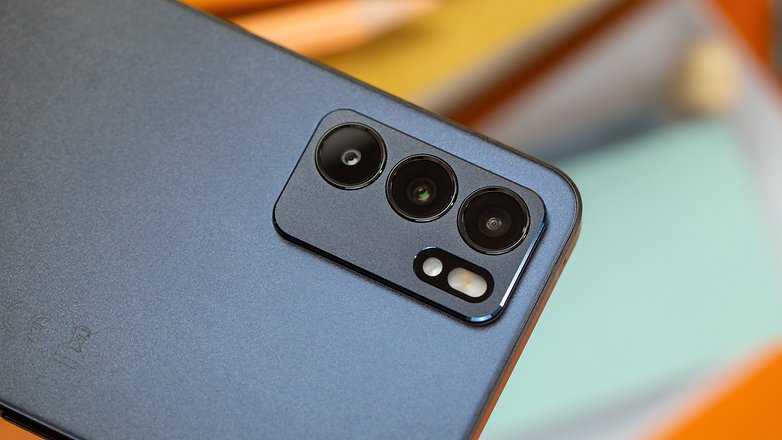
When I took a look at the camera setup, I was disillusioned by the Oppo Reno 6's price tag. In this department, other manufacturers have already included 108MP sensors and a telephoto lens. Oppo opted for a perfectly adequate 64MP sensor, a solid ultra-wide-angle shooter, and padded on the specifications with a pretty much useless 2MP macro camera. Before I show you their results, I would like to put in a quick word about the video mode.
In the press release for the Reno 6, the manufacturer made special mention of an AI-powered video bokeh mode. This video bokeh mode will process information obtained from the 32-megapixel selfie camera so that your face remains sharp while the background is blurred. We're already familiar with digital video bokeh from Samsung, but Oppo certainly didn't take its cue from the South Korean giant. With Apple all set to unveil the iPhone 13 on September 14, which is just a few days after the Reno 6's launch, it looks like Oppo would like to steal Apple's thunder! Especially when a digital portrait bokeh has been widely speculated to arrive on Cupertino's upcoming iPhone generation.
In Oppo's case, the video mode works rather reliably. However, I do not think that the bokeh doesn't look natural at all. This is partly due to the rather aggressive background blurring that is applied, and it results in some artifacts which are dragged from the background, ending up masking your face.
Pictures under bright conditions
Selfie videos aside, the Reno 6's 64MP main camera snaps really nice photos under good lighting conditions. Here, it's difficult lighting situations where I like the smartphone's photos. This is due to Oppo's famous excellent HDR mode, which also reproduces rather good colors when AI scene optimization is deactivated.

By the way, the resolution of the resulting photos is not 64MP. This is because just like many other smartphones, the Reno 6 relies on pixel-binning and, in this case, merges four pixels into one. The result is 16MP images that, according to the manufacturer, are supposed to be better than conventional 16MP photos. If you want to go all the way to 64MP, there's an option to enable that in the camera app, too.
What I really have to criticize Oppo for is the lack of a telephoto lens in the Reno 6. This means you always have to resort to digital magnification when zooming in to get closer to your subjects. Despite the 64MP sensor, doing so results in very little detail and a rather artificial haze hanging over the pictures.

With ultra wide-angle shots, however, the smartphone does a good job even if the 8MP resolution could be better. Despite this limitation, I liked the photos in terms of lighting mood, colors, and contrast. However, you have to expect quite a bit of distortion at the edges of the image.
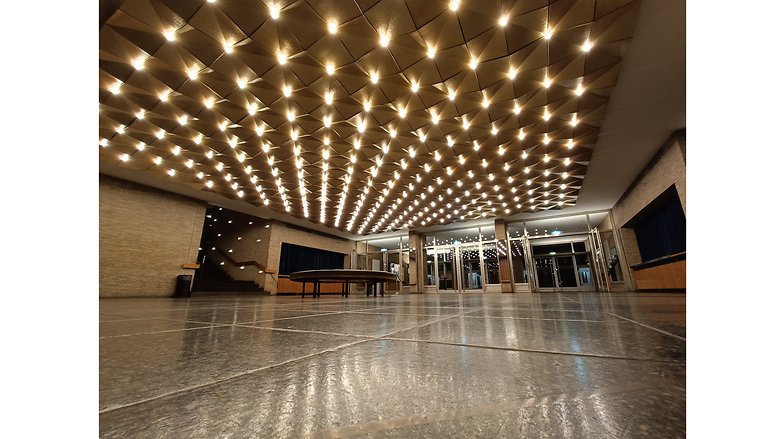
Pictures in low-light situations
When dusk arrives, you can still take pictures with the Reno 6 without any issue. The manufacturer has integrated a night mode into the smartphone for this very purpose. I like the results especially because they don't overly brighten dark areas of the picture. The smartphone was able to capture the Festival of Lights in Berlin on the Sunday before Oppo's release event quite well.

However, in combination with the ultra wide-angle camera, the photos are somewhat lacking in detail and the device tries to iron out image noise a bit too much. This isn't a major flaw on the Reno 6, as many other manufacturers also use smaller sensors in their phones' secondary and tertiary cameras. I still have no love for the third camera, which is a 2MP macro camera that would rarely, if ever, see action in a 500-dollar handset.
How about its selfies?
Let's close the segment on cameras by returning to the beginning - selfies. The Reno 6 offers a portrait mode on both its main cameras and selfie camera, which blurs the background. As expected, the main camera's portrait images are better than the selfie camera images.

I like the blurring of the images here far better than the videos.
TL;DR: Unfortunately, Oppo's attempt to add something special to the Reno 6's camera with the selfie portrait videos fails somewhat. The feature is average at best and thus cannot draw your attention from the fact that the camera's specifications are rather mediocre. It lacks a telephoto lens for 500 dollars, and the 2MP macro camera is basically an afterthought.
Oppo Reno 6 5G battery
The Reno 6 packs a long-lasting battery rated at 4,300 mAh. You can recharge it via the included 65-watts power adapter. Oppo is very good at quick-charging and the smartphone's battery will hit the 100 percent mark within half an hour. Awesome!
What I liked:
- Really solid battery life thanks to the 4,300 mAh and 90 Hertz display
- Quick charging is top-notch in terms of speed
Didn't like:
- No wireless charging
- Power adapter with USB-A port (matter of taste)
Last but not least, I want to tell you about the battery life and quick-charging capability in the Reno 6. The battery of the smartphone has a 4,300 mAh capacity and this delivers really solid battery runtimes in everyday use. Based on my usage pattern, I was able to use the smartphone for two days without having to recharge it. But that's also because the fast charging function messed up my overnight charging rhythm.
Armed with a stopwatch in hand, I was able to record the following fast charging times via the included power adapter. Starting from a 5 percent battery level:
- up to 20 percent in 3 minutes
- up to 30 percent in 4.30 minutes
- up to 50 percent in 9 minutes
- up to 75 percent in 16 minutes
- up to 100 percent in 27 minutes
As with the previous model, this is made possible by Oppo's fast charging technology known as "SuperVOOC 2.0". The feature is technically impressive and is really extremely convenient in emergency situations. For instance, whenever you need juice just before setting out for the entire day. However, it might affect the battery life in the long run if you were to constantly recharging it.
TL;DR: Power-wise, everything about the Reno 6 is top-notch! The smartphone offers both long battery life and fast quick charging. The only missing feature here is wireless charging.
Oppo Reno 6 5G technical specifications
Oppo Reno 6 5G: Spec-Sheet
| Oppo Reno 6 5G | |
|---|---|
| SoC | MediaTek Dimensity 900 |
| Storage (RAM / internal) | 8 GB / 128 GB |
| Expandable storage? | No |
| Dual-SIM | Yes |
| Display | 6,43 Zoll AMOLED with 90 Hz |
| Size | 156,8 x 72,1 x 7,59 mm |
| Weight | 182 g |
| Connectivity | 5G, LTE, WLAN 802.11 a/b/g/n/ac/6, Bluetooth 5.2, USB Typ-C, NFC, GPS |
| Main camera | 64 MP wide-angle (f/1.7) |
| Ultrawide | 8 MP (f/2.2) |
| Macro | 2 MP (f/2.4) |
| Selfie-cam | 32 MP |
| Video | Max. 30 FPS at 4K |
| Battery | 4.300 mAh |
| Charging-technology | Quick-Charging (65 W) |
| Security | in-display fingerprint sensor |
| OS | Android 11 |
| Price | 500 US-Dollars |
Final verdict
If the Oppo Reno 5 5G had been released in Germany, I could have almost copied contents of its review and pasted it here. Because apart from the SoC and the camera, there are minimal differences between the two smartphones. Unfortunately, this is also almost the case with the jump from the Reno 4 5G.
That's because Oppo's decision to go with a MediaTek SoC on the latest Reno model isn't exactly headline-breaking news. Even the camera upgrade is a tiny step up, featuring an average triple camera that lacks a telephoto lens. The fact that Oppo has done away with the dual punch hole notch in the Reno 6 is once again, a very positive step.
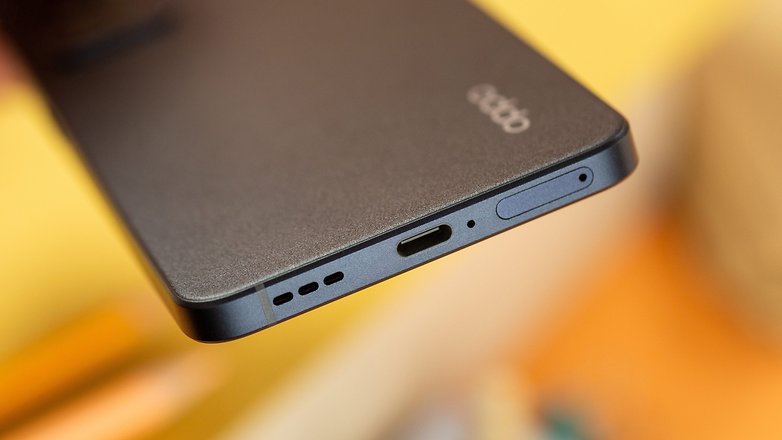
It does seem that capturing selfie videos with bokeh is also possible in this manner. The highlight feature of the smartphone performs well, but over the course of the smartphone's life, you will find it to be far less important in everyday life than the other missing upgrades. Thus, you end up with only an IP54 certification rating, no larger storage options, no microSD slot, and missing stereo speakers for 500 bucks in 2021.
Nevertheless, highlights include the fast quick-charging and one thing in particular: The workmanship and the design are really high quality, something that you might associate with Apple. The Reno 6 is therefore once again a recommendation if you are visually enamored by the smartphone. Otherwise, there are more powerful and exciting alternatives out there for less than 500 dollars.
